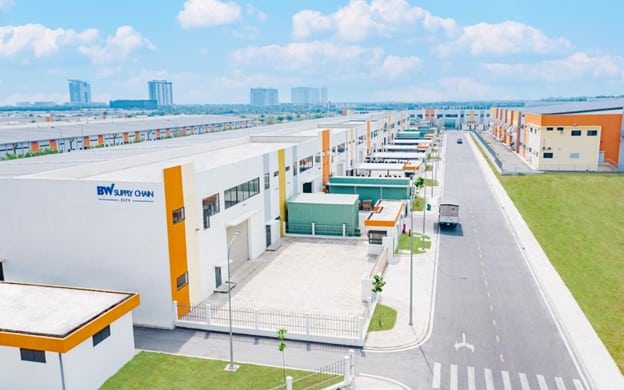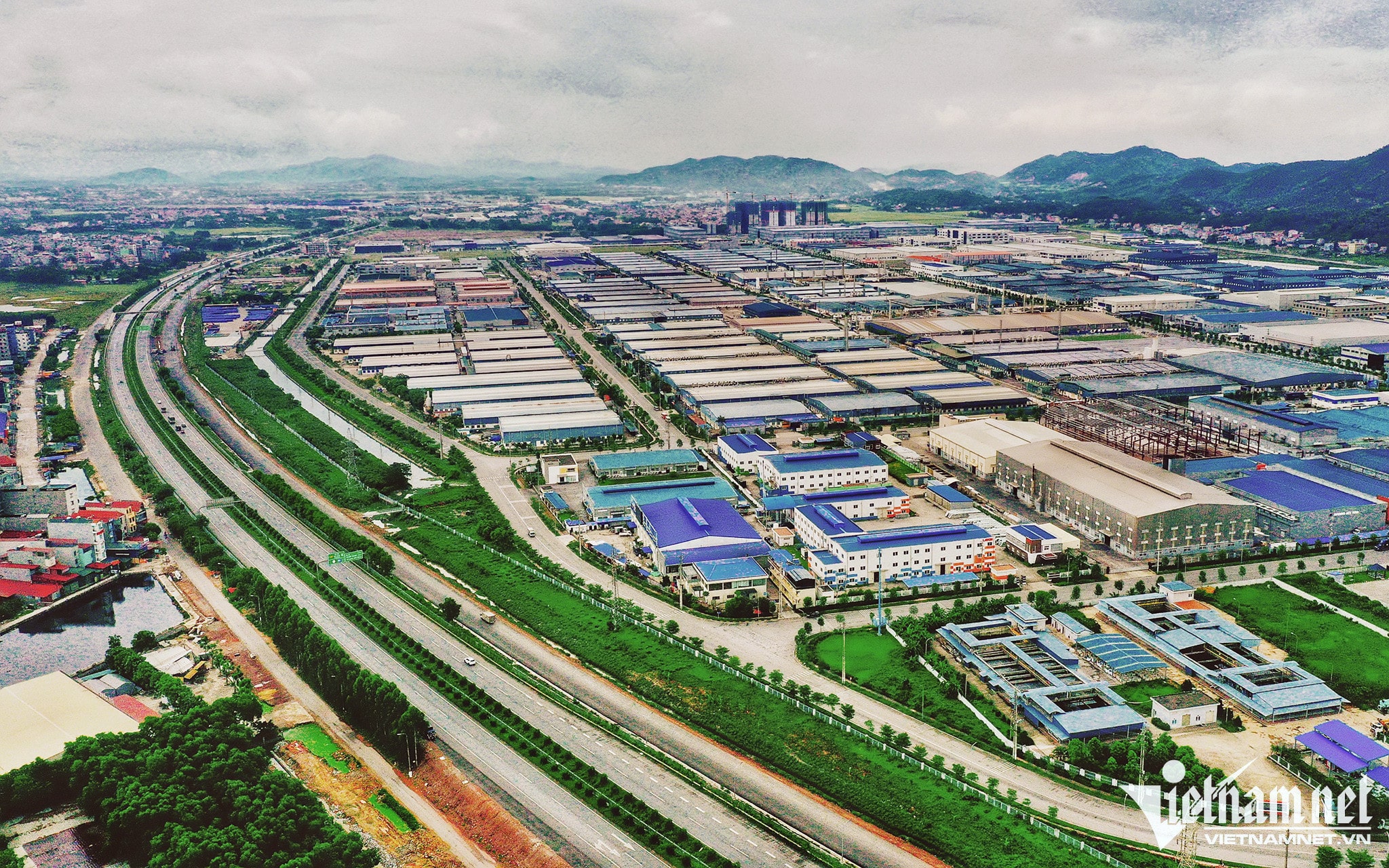Strong demand for fruits and vegetables is pushing food cleanliness and safety standards in Vietnam, which is driving investments in new cold storage facilities. The demand for them is increasing because of internet shopping’s growth, a market that is critically undersupplied globally. According to research companies, internet shopping in Asia-Pacific will rise by 30% annually up to 2024. Therefore, cold storage warehousing demand is now becoming a necessity. This article will break down further why this necessity is rising.
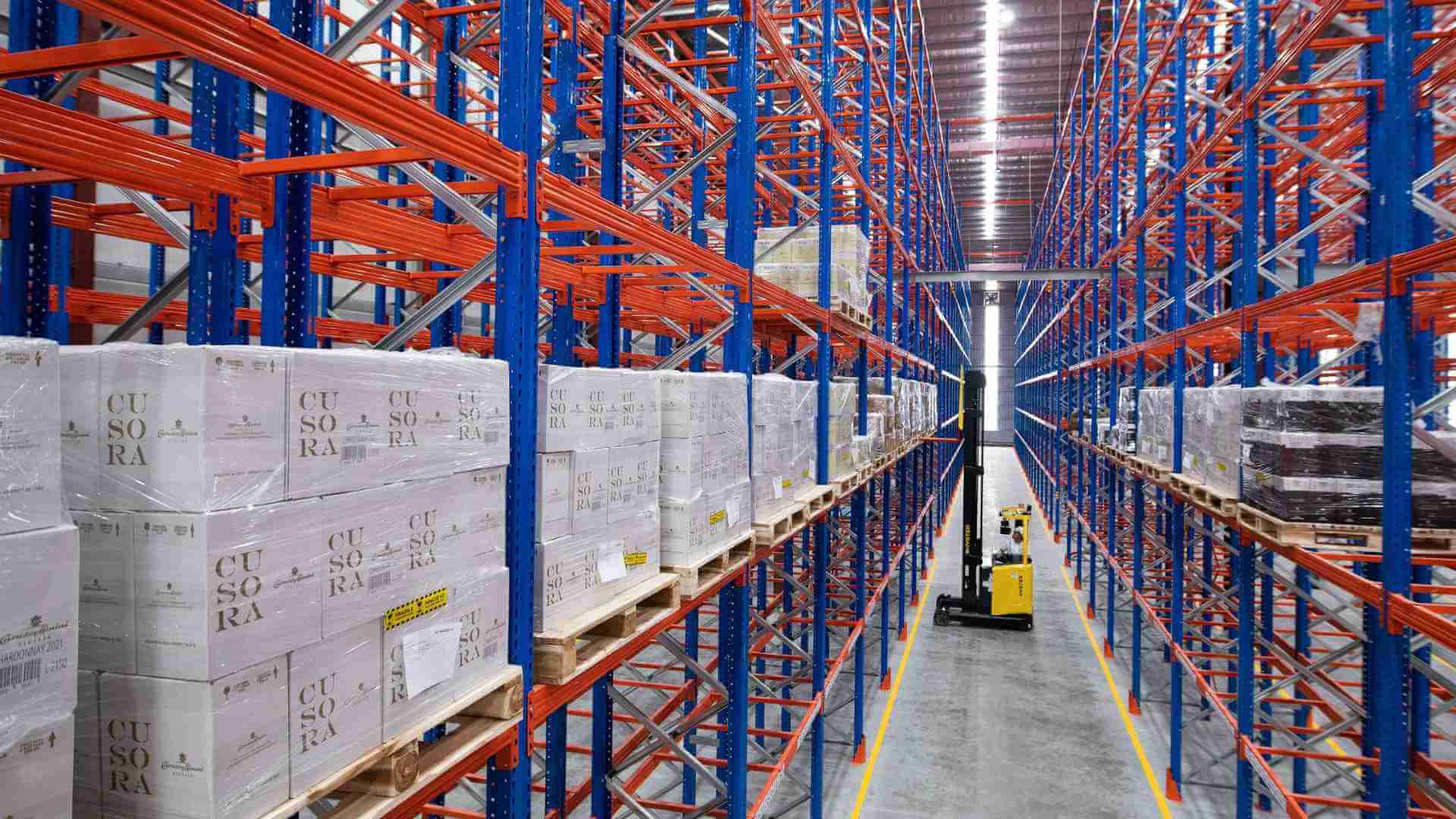
What is a Cold Storage Warehouse?
A cold storage warehouse is a storage facility constructed with precise climatic conditions in mind to keep items safe at suitable temperatures. These warehouses usually look like any other warehouse from the outside, but differ in their internal environment.
Some cold storage facilities have such severe conditions, depending on the type of items and the customers’ demands. Cold storage warehouses may also be constructed in a variety of configurations, depending on the needs. As a result, it is a critical node in the food supply chain logistics and other sectors.
What is the Purpose of a Cold Storage Warehouse?
As the name implies, a cold storage warehouse differs from other types of warehouses. It needs additional maintenance and monitoring in terms of temperature and heat exchange. Products that can be damaged in typical room temperature settings require cold storage to ensure their safety.
- Food and beverages
Everything we buy at the market and keep in your refrigerator comes mainly from a cold storage facility. Cold warehouse storage is required for dairy goods, meat, vegetables, ice cream, etc. The final retail outlets are located a long distance from the manufacturing point.
As a result, it is critical to maintaining the quality of manufactured goods. These items are stored at various cold storage facilities based on their proximity to the ultimate place of sale. In certain situations, the product price includes the cost of the cold storage warehouse, which is why such items are slightly more expensive than other ones.
- Plants and flowers
Plants are likewise divided into separate areas in cold storage warehouses. When you purchase a plant or a bouquet from an online retailer, the goods are kept in a refrigerated warehouse. The plants are grown on a farm, but they are stored in this warehouse to prevent spoilage for long-distance deliveries.
- Pharmaceutical applications
Cold storage warehouses also play an important role in saving people’s lives. Many pharmaceutical items, such as medications and supplements, must be stored at a certain temperature. To meet their demands, several hospitals have term-based contracts with such warehouses.
Vietnam has a strong demand for cold storage facilities, particularly in the food, cosmetics, and vaccine industries. These types of items are frequently entrusted to a cold storage warehouse. Otherwise, since Vietnam is the third-largest seafood exporter globally, the seafood industry accounts for a sizable portion of the cold storage warehouse market.

Benefits of a Cold Storage Warehouse
- Quality assurance
It is a significant responsibility to keep commodities secure from deterioration in a cold storage facility. Manufacturing businesses would suffer a significant loss if cold storage warehouses did not exist, as most manufacturing hubs are located far from their final destination.
- Cost-effectiveness
If each business had its own cold storage warehouse, it would take up lots of space and money. Outsourcing and centralizing cold storage warehouse services allows them to take advantage of their time, money, and space.
- Smooth logistics supply chain
Logistics refers to the entire process of distributing manufactured items to end-users. It includes several operations, such as manufacturing, distribution, and so on. Warehousing is a component of the chain that helps to simplify the whole process. By offering short-term storage of commodities, the cold storage warehouse plays an important role.
Factors Driving Cold Storage Warehousing Demand
The demand for cold storage warehousing is influenced by several factors that reflect the changing dynamics of global markets and consumer behavior. The following factors are significant drivers behind the increasing demand for cold storage facilities:
Increasing global population and urbanization
The world’s population continues to grow, particularly in urban areas. As urbanization intensifies, the demand for perishable goods such as fresh produce, dairy products, and frozen foods also rises. Cold storage warehousing plays a crucial role in ensuring a consistent supply of these perishable items to meet the needs of growing urban populations.
Expanding food and beverage industry
The food and beverage industry is experiencing remarkable growth worldwide. With changing consumer preferences and an increasing demand for convenience, ready-to-eat meals, and processed foods, the need for adequate cold storage facilities is on the rise. Cold storage warehouses are essential for preserving the quality and safety of food and beverage products throughout the supply chain.
Growth of e-commerce and online grocery shopping
The rapid growth of e-commerce, including online grocery shopping, has significantly impacted the demand for cold storage warehousing. Consumers now expect fresh and frozen goods to be delivered directly to their doorsteps. E-commerce retailers and online grocery platforms require robust cold storage infrastructure to maintain product integrity and meet customer expectations for quick and efficient delivery.

Rising demand for perishable goods and pharmaceuticals
The demand for perishable goods, including fresh produce, meat, seafood, and dairy products, continues to rise globally. Additionally, the pharmaceutical industry relies on cold storage facilities to store temperature-sensitive medications and vaccines. As advancements in medical research and the availability of specialized pharmaceuticals increase, the demand for cold storage warehousing for pharmaceutical products also grows.
Stringent food safety and quality regulations
Governments and regulatory bodies worldwide have implemented stricter food safety and quality standards to protect consumers. Cold storage warehousing plays a crucial role in maintaining the required temperature conditions for perishable goods, preventing spoilage, and ensuring compliance with these regulations. To meet these standards, businesses in the food industry need adequate cold storage infrastructure.
The combined effect of these factors drives the demand for cold storage warehousing, as businesses strive to meet the growing needs of consumers, comply with regulations, and maintain the integrity and safety of perishable goods throughout the supply chain. Understanding these drivers is essential for stakeholders in the cold storage industry to effectively plan and meet the evolving demand.
Cold Storage Warehousing Demand is On The Rise in Vietnam
Globally, the worldwide cold storage market is predicted to increase at a compound annual growth rate (CAGR) of 14.5% from $141.39 billion in 2022 to $161.92 billion in 2023. The Russia-Ukraine conflict, at least in the medium term, hampered global economic recovery from the epidemic. The conflict between these two nations has resulted in economic sanctions against a number of countries, a rise in commodity prices, and supply chain disruptions, resulting in inflation across products and services and hurting numerous markets throughout the world. The cold storage market is predicted to develop at a compound annual growth rate (CAGR) of 17.0% to reach $303.22 billion in 2027.
The expanding perishables trade forces the cold storage business to supply higher-quality items to its clients. According to a study issued in 2021 by the Food and Agricultural Organization of the United Nations, worldwide milk production reached 906 million tonnes in 2020, up 0.2% from 2019. Another article published by the Food and Agriculture Organization of the United Nations and the Organization for Economic Cooperation and Development, an intergovernmental organization with 38 member countries, stated that total meat production in 2020 is expected to be around 134 megatons, 1.2% higher than in 2019. As a result, an increase in perishables commerce will raise demand for cold storage.
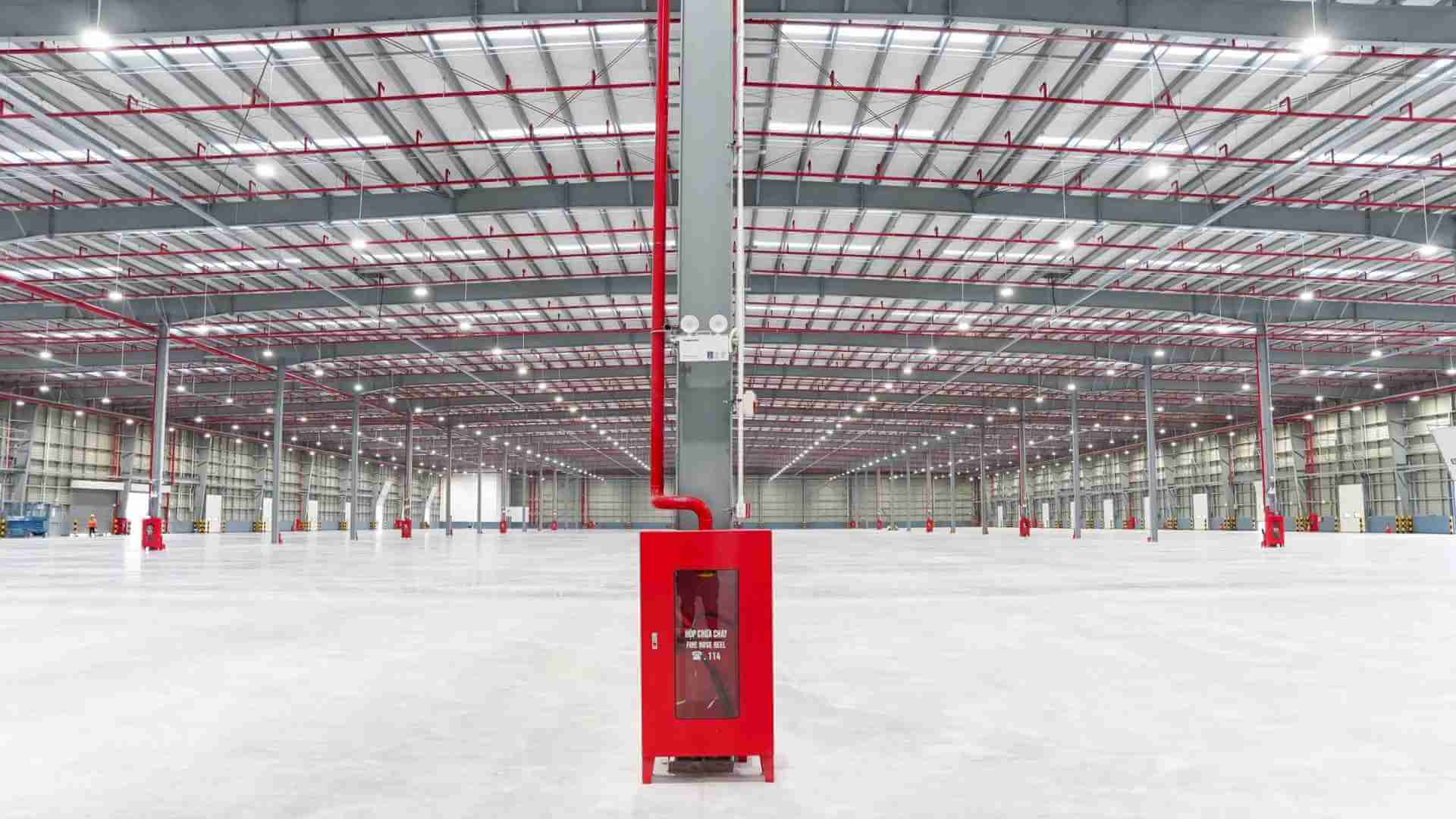
Both domestic and international investors have actively participated in and expanded the Vietnamese cold chain business. The entire intended capacity of cold storage in Vietnam is expected to exceed 1.7 million pallets by 2026, with 23 projects slated to be completed between 2023 and 2026.
According to Fiingroup’s latest report, the cold chain market in Vietnam has experienced robust growth, resulting in a 25.2% increase in the designed capacity of cold storage facilities as well as a growing fleet size of cold transportation providers between 2020 and 2022, driven by increased demand for cold storage facilities and transportation providers.
Demand for seafood exports, raw food imports, and domestic distribution, including contemporary trade retail and food services, has fueled the sector.
According to the analysis, Vietnam’s cold chain logistics industry is expected to be valued at $203 million in 2022, with 75 commercial cold storage providers and 31 professionally managed cold truck suppliers with a total planned capacity of more than 1.0 million pallets.
Because of the market’s rapid expansion, both domestic and international investors have been eager to participate and increase their presence. The entire intended capacity of cold storage in Vietnam is expected to exceed 1.7 million pallets by 2026, with 23 projects slated to be completed between 2023 and 2026.
Strategies for Meeting Cold Storage Warehousing Demand
Meeting the increasing demand for cold storage warehousing requires strategic approaches and innovative solutions. Industry stakeholders employ various strategies to effectively address the growing demand and optimize their operations. The following strategies are commonly implemented:
Expansion and construction of new facilities
One strategy is to invest in the expansion or construction of new cold storage facilities. This involves identifying suitable locations, acquiring land, and building state-of-the-art warehouses equipped with the latest refrigeration and storage technologies. By expanding capacity, businesses can accommodate growing demand and ensure a reliable supply of cold storage space.
Retrofitting existing warehouses for cold storage
Another approach is to retrofit existing warehouses or distribution centers to incorporate cold storage capabilities. This involves upgrading insulation, installing refrigeration systems, and implementing temperature-controlled zones within the facility. Retrofitting enables businesses to leverage their existing infrastructure while adding cold storage functionality, reducing costs compared to constructing new facilities.
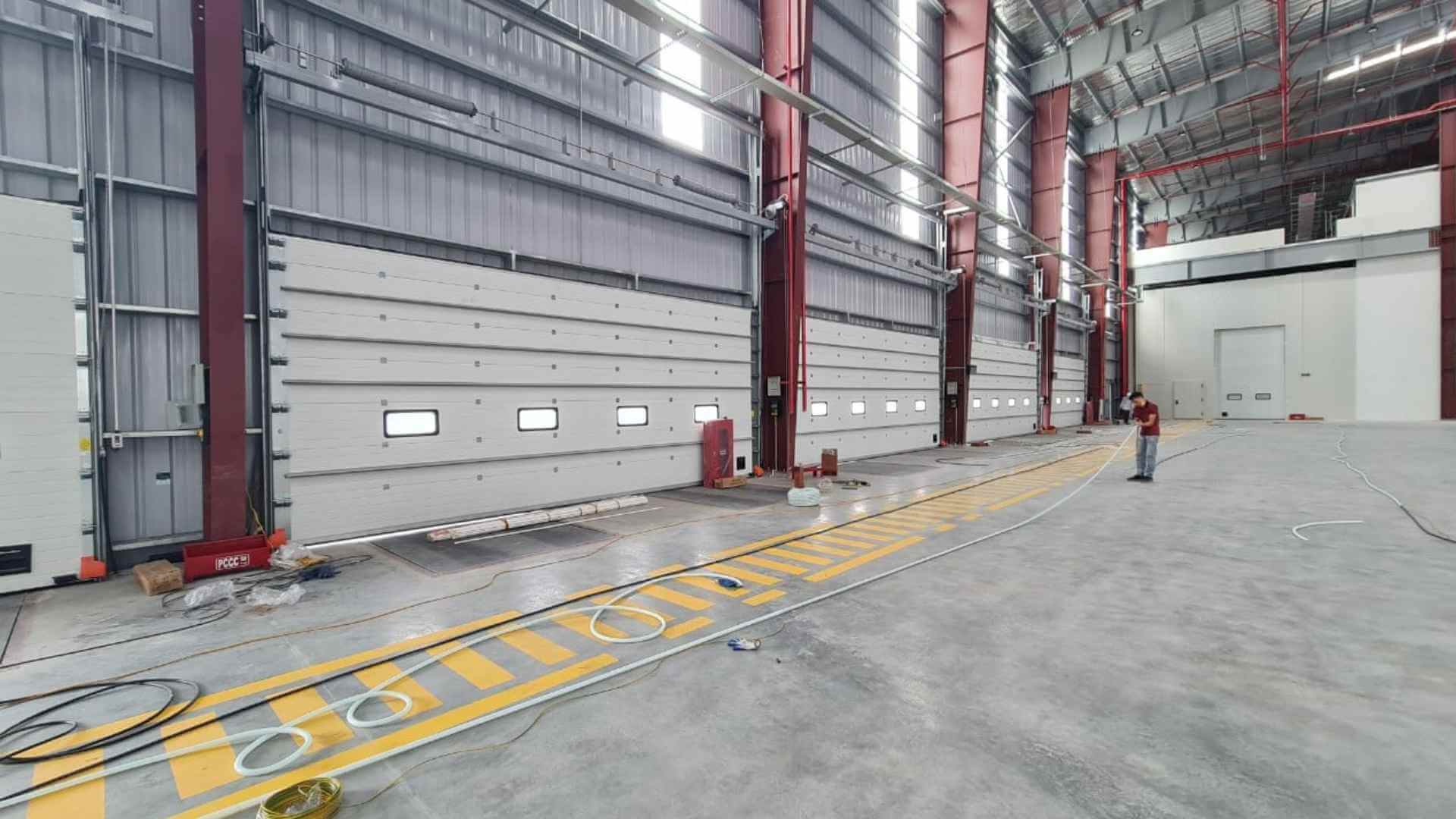
Collaborations and partnerships in the industry
Collaborations and partnerships within the cold storage warehousing industry can help meet demand more efficiently. Companies can form strategic alliances with logistics providers, transportation companies, and cold chain experts to enhance their capabilities and extend their reach. Collaborative efforts enable shared resources, knowledge exchange, and the development of comprehensive solutions that cater to the specific needs of clients.
Adoption of advanced technologies and automation
Embracing advanced technologies and automation is crucial for optimizing cold storage operations. This includes implementing robotics, AI, and machine learning for efficient inventory management, temperature monitoring, and order fulfilment processes. Automated systems can enhance accuracy, reduce labor costs, and streamline operations, ensuring timely and error-free storage and retrieval of products.
Supply chain optimization and inventory management
Effective supply chain management and inventory optimization play a vital role in meeting cold storage warehousing demand. By implementing robust inventory management systems and predictive analytics, businesses can accurately forecast demand, minimize wastage, and optimize storage capacity. Efficient supply chain processes, including transportation planning, route optimization, and real-time tracking, can ensure timely and reliable delivery of products.
These strategies enable industry stakeholders to address the increasing demand for cold storage warehousing by expanding capacity, enhancing existing infrastructure, leveraging collaborations, embracing technology, and optimizing supply chain operations. By implementing a combination of these strategies, businesses can meet customer expectations, comply with regulations, and achieve operational excellence in the dynamic cold storage industry.
Explore more on Cold Storage for Lease in Long An
Conclusion
The development of the logistics sector has boosted the need for cold storage warehouses. There are numerous cold and cold storage firms in Vietnam, including warehouse limited and other subsidiaries. And now, we intend to grow further to establish a professional presence in the cold and cool supply chain, which includes cold storage and cold delivery.
Savills Industrials Vietnam advises occupiers, developers, and investors on lease and investment transactions. Savills Industrials aims to provide dependable advice, investment assistance, and industrial consulting services. Mr. John Campbell, Department Head, is spearheading the endeavour, having negotiated several leases, factory acquisitions, and sale-leaseback transactions. John and his dynamic team provide Landlord Advisory, Tenant Representation, Strategic Leasing, Investment Brokerage, and Sales & Leaseback services to a diverse range of clients.








